So far, in examining the various styles of comic book art, two broad movements have emerged; that of the “painterly” comic book artists (those working with tools outside of the conventional comic book artist’s traditional toolbox), and the “unconventional” comic book artists (those who work within the more accepted forms of the medium, but who have such a pronounced style as to set it markedly apart from the norm). The third school of thought might be the trickiest to master, (and one that most comic book artists working within the other two streams have, at some earlier point in their careers, learned to hone their craft with). These comic book artists are the masters of the traditional school of comic book art, using the unadorned, simple perfection of a job well done to create elegantly beautiful comic books. These are the Traditionalists.
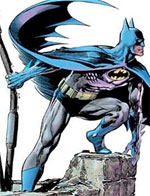 Neal Adams
Neal Adams
Back when proportion and and elegant line weren’t always the norm, Neal Adams never failed to deliver. His innovative, distinctive work convey exactly the mood, intensity, and drama needed to bring the characters he portrayed to life. His meaty, substantial style gave depth and created atmosphere when these things were anathema in most comics (or at the very least, completely outside of the established range of comics in that period). With style and aplomb, he created drama and subtlety in comics, creating a new era in the genre.
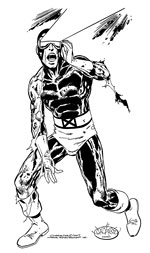 John Byrne
John Byrne
Ah… what can I say about John Byrne? This is the man who got a 10 year old english schoolgirl hooked on reading about powerful women on comics. At a time when most women were being drawn as emaciated sex objects with little or no muscle tone, he found a way to imbue these terribly frail, feminine creatures with a dynamically powerful musculature. For my money, there’s always going to be something about a John Byrne jawline/hairstyle/breast/shoulder/kiss, that just screams his name. He draws a certain kind of person, with a certain kind of bone structure that just worked perfectly in it’s place. His sense of proportion, understanding of anatomy, and stylish scene-setting always pleased me as a child. It just seemed to represent everything that a team comic should in that time.
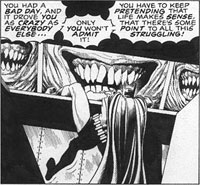 Brian Bolland
Brian Bolland
This man’s attention to detail is almost disturbing, his incredibly detailed line work, practically perfect anatomy, and exquisite layouts. I’m not really sure how he can possibly draw fast enough to make a living doing what he does, when every damn line he draws is in precisely the correct place needed in order to create the optimal imagery . The caliber of his work is quite simply mind blowing. Even I (a die-hard non-brit-comic-reader) have to admit that his work on British comics like Judge Dredd is perfection, It’s easily overshadowed by his work on the groundbreaking book; Batman: The Killing Joke. Even today, his covers on recent books like Fables enrich and build upon the character’s he depicts.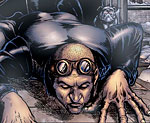 Darick Roberston
Darick Roberston
With true vigor and seeming relish, Robertson manages to depict the very basic realities of a fleshy daily life. His ability to immerse us in the sweat and effluvia of each moment, heaps reality onto every surreal moment he depicts. It seems that there is nothing Robertson shies away from, and with true dedication, he brings it all to the page. Despite this intense attention to gruesome detail, he never makes his work bleak or cruel, always bringing a strong dash of pure fun and luscious enjoyment to the proceedings. I’m not entirely sure if this is intentional, or if it’s simply a byproduct of his own joyful and exuberant approach to life.
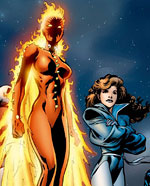 Alan Davis
Alan Davis
It was Alan Davis who I made me fall in love with the idea of wanting to physically touch his drawings. It makes no sense, they aren’t three-dimensional, but like a Barbara Hepworth marble sculpture, the fluid, sexy lines of his characters cry out to be borne into the real world, where they can move and be touched. Many years ago, I met him and asked how he was able to draw this way, to create such beautiful, molten forms of muscular perfection. He told me that people often asked if his wife was built like a superhero, since they had also observed this very tactile form that he depicted. He said that she wasn’t, but that she felt like one, and that was how he drew such perfectly formed female figures. That answer made a lot of sense to me, since I feel that in many ways, Davis draws as if he’s drawing from sense memory, rather just visual memory.
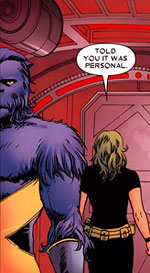 John Cassaday
John Cassaday
Apart from his increasingly good eye for anatomy, proportion and a beautifully composed page, Cassaday seems to have a uniquely delicate touch with his style. When I first saw Cassaday’s inking, I assumed that he inked using a rapidograph. There was none of the rough edges that I’d associate with any kind of contemporary fine point felt tip, but the perfectly uniform nature of the delicate line work of his art couldn’t possible be brush work. I was wrong, at least according to Cassaday. He says that he always inks with a brush, which I have to say is impressive to say the least.
Rather than reinventing the wheel, these artists choose to create their own vision of perfection within the very tight constraints of the established norms of the comic book world. Using only an incredible attention to detail and an unparalleled commitment to excellence within the medium, they take every expectation we have about comic book art, and turn it on it’s head. The artists to watch work in every corner of the comic book world using this more traditional approach to create their art. As well as the artist’s explored above, a nod must be given to people like John Buscema, George Perez, Bryan Talbot, Jamie McKelvie and Mike Allred, all of whom are using classic comic artist’s tools to tell stories in new ways. These comic book artist’s work appeals on a very basic level to those of us who’ve been reading comics ever since we were first able to read and pick up a comic book. Reading comics that ostensibly look like every other comic book, and yet somehow do it so much better than we could ever have imagined, this is satisfying on a very deep level.
Sonia Harris lives, works, and plays in San Francisco. She’s originally from London, and is really happy that she’s immersing herself in this classic comic art lurve. Please email her at sonia@ifanboy.com.


John Cassaday is the man! Astonishing X-Men I realize may be Marvel’s all time greatest comic run!
I’ve grown to love a man in a couple of months thanks to Darick Robertson. Thanks to Transmetropolitan; he’s become my favorite artist.
I’m a giant Robertson fan, but to be honest, his work never seems to look as good as it did with Transmet and Rodney Ramos inking him. It makes a big difference.
Fantastic list! I love Brian Bolland’s work. He is one of the only artist that can both make me laugh and give me the creeps with his work.
Love me some Brian Bolland! I wish he would do more then covers now. Although he does some great covers. I’ve been going through Camelot 3000 and it is great early Bolland.
Robertson on Transmet can’t be denied.
One unconventional artist that I loved (although he hasn’t done a ton) was Faryl Dalrymple who did that Omega the Unknown mini which I loved! It was weird but fantastic an unlike any other book that was on the shelfs then.
@josh: Interesting; cause I actually agree with Ramos making his art look better.
I think Robertson’s pencils are great no matter who colors/inks his work. I have the first The Boys trade and art wise I really liked it. But it was such a stark difference to what I saw in Transmetropolitan. It was up to the point where I thought it was a completely different artist. So maybe I would’ve liked that series more if Ramos did the inking for the series.
Damn, I wish I were able to analyze and appreciate comic art even a fraction as well as you (and many others on here) do. I’m a scientist by trade so have absolutely no background in the creative arts (besides playing music) and often find myself confused when folks start to talk about and analyze comic book art in depth. Can anyone recommend good reading material to increase my comic book appreciation abilities? I read Scott McCloud’s "Understanding Comics" quite awhile ago and plan on rereading it soon, but are there any other references that you’d recommend?
@Sonia – Thank you for doing these. I have learned a great deal over the last few weeks. Will there be a final exam?
@sonia Another good article. All are worthy of praise.
@josh & @TNC: I agree I was actually late in the game reading Transmet and just started picking up the trades as they were being re-released. (Still looking for vol 3 since again my LCS didn’t get it. Maybe I’ll shop at instocktrades.com and get it for 37% MSRP.) I noticed a pretty substantial difference. The pages just out at you more.
Sweet article!
"Daughter of the Demon" by Adams was the first comic I ever had (in French). It’s as amazing now as it was when I first looked at it at 7. It took 23 years to get back to comics …
Why doesn’t someone pay Brian Bolland 1,000,000 to do interiors? We need more Brian Bolland interiors in our life.
Awesome article!!!
Great series of articles. I read comics for years without really paying much attention to the people actually creating them, then stopped reading altogether. Back to reading them again, mainly because of the creators. These articles on the art behind them, and the people doing the art, have come at a perfect time. Thanks! Time to ask for a hefty raise and some stock options. . . .
I did not like Robertson on The Boys. But his work on Transmet was phenomenal.
Sonia, awesome article, your picks are excellent, and I don’t think I’ve ever seen a comics critique with this slant before..!
And yes, John Byrne. When he was doing FF and Alpha Flight, he ruled.
Liked the shout-out to John Buscema and Perez.
If I had to say who you missed, I’d say Jim Starlin.
I’ve been re-reading Simonson’s Thor run recently, and I don’t think he gets enough credit for how innovative, bizarre, and amazing both his pencils and layouts were in these issues. When talking about the great super hero artists, I now think he has to be in the mix.
Robinson is great on The Boys. You guys are crazy(although his work on Transmetropolitan is amazing)!
@SirCox: I think his pencils are great for ‘The Boys’. I’m not a huge fan of the story, but the art is what kept me reading the first trade. But it’s the coloring and/or inking that made me second guess if that was the Robertson I first laid eyes on.
Thank you for mentioning Brian Bolland. He was one of the first comic book artists I knew and is still my touchstone for what good graphic art is. I bought the first 2000AD when I was 7 years old (because I wanted the free gift!) and continued with it through the Cursed Earth story with Bolland and McMahon. Other delights included Dave Gibbons, Alan Davis, Bryan Talbot, Alan Moore, Kevin O’Neil, Carlos Ezquerra, Grant Morrison, Simon Bisley, Garth Ennis etc. Have to admit though, 2000AD isn’t up to much these days.
I am not sure if it is fair not to mention Jim Lee and Ethan Van Schiever in this discussion. Both aren’t breaking new ground but their pencils are consistently described as “tight”. I have been consistently impressed with Frank Quitely’s pencils as well.
*Van Sciever
*Sciver. All thumbs this morning.
But you left out the most underrated of them all: Phil Jemenez.